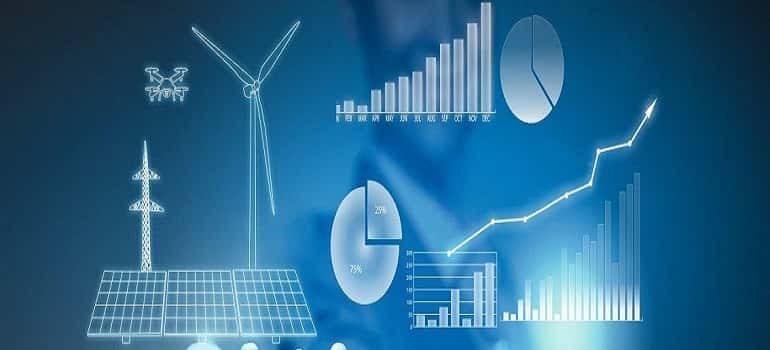DNV GL position paper outlines advances in robotics, inspections, supply chain and the way we work — showcasing opportunities for solar and wind stakeholders as the industry embraces artificial intelligence applications

Artificial intelligence (AI) will increasingly automate operations over the next several years in the solar and wind industries and boost efficiencies across the renewable energy sector, according to a new DNV GL position paper.
The position paper “Making Renewables Smarter: The benefits, risks, and future of artificial intelligence in solar and wind” explores where artificial intelligence like machine learning will have an impact to increase efficiencies in the renewables industry. Areas include decision making and planning, condition monitoring, robotics, inspections, certifications and supply chain optimization, but also the way technical work is carried out.
ALSO READ: DNV GL announces knowledge partnership to develop offshore wind sector in Taiwan.
The renewables industry is a data rich environment. Wind and solar generation plants have benefited from the fact that these technologies have been commercially developed relatively recently and have had sensor technology installed from the beginning. As a result, most of the advances supported by artificial intelligence have been in resource forecasting, control and predictive maintenance. DNV GL’s paper outlines how these AI advances are likely to progress further.
ALSO READ: India added nearly 2,247 MW of solar capacity during July-September: Report
“We expect the installation of more sensors, the increase in easier-to-use machine learning tools, and the continuous expansion of data monitoring, processing and analytics capabilities to create new operating efficiencies—and new and disruptive business models,” commented Lucy Craig, Director Technology and Innovation at DNV GL – Energy.
Solar and wind industry stakeholders will see artificial intelligence benefits in several areas, including:
- Robotics growing in prevalence for remote inspection, with new benefits in maintenance and troubleshooting.
- Crawling robots that can get close to a structure’s surface enabling a new set of technologies such as microwave and ultrasonic transmitters and receivers, which can be used to penetrate structures to reveal faults in materials.
- Supply chain optimizations by autonomous driving robots, which can in future build entire onshore wind or solar farms: parts of a wind turbine or a solar array are transported from the factory by self-driving lorries, unloaded by another set of robots, attached to the foundations that yet other robots have dug and filled, and pieced together by a final set of robots and drones.
- Autonomous drones with real-time artificial intelligence-supported analysis will become the primary tool for carrying out effective and efficient inspections of wind turbines and solar panels.
- AI applications accelerating due diligence, reducing the time investment of planning and analysis that today requires many human hours.
In addition, artificial intelligence will tend to automate decision making, driving costs out of energy development, production, and delivery in the solar and wind industries.
Achieving those benefits comes with risks and challenges. “Risks intensify if you try to go it alone, rather than taking advantage of the large amount of domain knowledge and data in the solar and wind areas” said paper lead author Lars Landberg.
For most players in the renewables industry, building artificial intelligence systems that are stable, progressive and reliable requires sets of knowledge and data from across many different projects.
To get adoption rates right, a deep knowledge of the domain of industry experience is key. Fortunately, there is a large amount of historical data in the market.
“Solar and wind developers, operators, and investors need to consider how their industries can use it, what the impacts are on the industries in a larger sense, and what decisions those industries need to confront” co-author Elizabeth Traiger concluded.
Download a copy of “Making Renewables Smarter: The benefits, risks, and future of artificial intelligence in solar and wind” here

